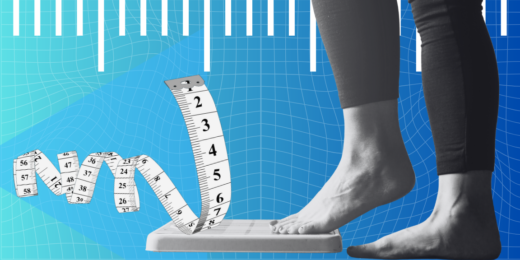Now that summer is here, it's hard not to grab every chance I can to bask in the sun that now stays above the horizon near my Montana home for hours longer than just a few months ago. But I try to balance my lizard-like tendencies with a healthy slathering of sunscreen to combat the damage the sun's UV rays can cause. My farmer father didn't have that benefit when he was growing up in the 1930s and 40s, and his skin tells the tale.
Decades of heavy sun exposure can lead to basal cell carcinoma, which requires a minor surgery to remove. Each procedure (often patients develop several spots) is a painstaking, progressive removal of layers of diseased skin, which are then examined while the patient waits. If cancer cells are observed, the surgeon removes another layer. The procedure, called Mohs surgery, is necessary to spare as much normal tissue as possible, but it can be time consuming.
Now dermatologist Albert Chiou, MD, and chemist Richard Zare, PhD, joined forces with dermatologist and Mohs surgery expert Sumaira Aasi, MD, to come up with a quicker, but still accurate way of defining the borders of tiny skin cancers. To do so, they turned to a technique called desorption electrospray ionization mass-spectrometric imaging, or DESI-MSI. They found that this approach rivaled that normally used in the clinic, and could even identify very small emergent cancers.
They published their findings last week in the Proceedings of the National Academy of Sciences.
As Zare explained in an email:
Presently, the Mohs surgery takes hours because the surgeon takes a cut of tissue, which must be stained and examined under a microscope before the next cut can be taken. My dream is that this new analysis can be done, in situ, during the surgery without the need of removing a tissue slice for examination, thus considerably speeding up the surgical procedure.
This isn't the first time I've written about DESI-MSI. As I've previously described:
DESI-MSI creates a highly detailed, two-dimensional map of the chemical composition of a tissue sample through a process that can be loosely compared to a specialized car wash. Samples are sprayed with a thin, high-powered stream of liquid droplets that dissolve their outer surface. The resulting back spray, which contains molecules from the surface of the sample, is collected and analyzed by mass spectrometry. By moving the tissue sample around in a two-dimensional plane, it's possible to make a chemical map of its composition.
Zare, Chiou and their colleagues used 86 previously excised samples of basal cell carcinoma, many less than one centimeter in diameter, to test whether the DESI-MSI analysis could give pathologists a run for their money in the identification of very small skin cancers. To do so, they coupled DESI-MSI with a machine-learning tool that was able to discern very specific chemical differences between normal and cancerous skin. They found that the new technique achieved nearly 95 percent diagnostic accuracy when compared to traditional pathological examination of the tissue samples.
As Chiou explained:
By scanning over a surgical specimen with DESI-MSI, we can literally map out, pixel by pixel, the presence and quantities of numerous metabolites, lipids, and other important biomolecules across the sample. We did this for dozens of surgical specimens containing both skin cancer and normal skin, which enabled us to develop an algorithm that can accurately identify basal cell carcinoma skin cancer from normal tissue using this rich chemical information.
It's always fun to write about research projects in which vastly different disciplines come together to design something new to help patients. The DESI-MSI technology came about as the result of a flourishing collaboration between chemists in Stanford's School of Humanities and Sciences and dermatologists in the School of Medicine.
Surgeon Aasi calls the technique potentially "game-changing" in the fight against skin cancer speculates that "One day it may be possible to know exactly where and how much to cut before even picking up the scalpel."
Photo by Amanda Tipton




